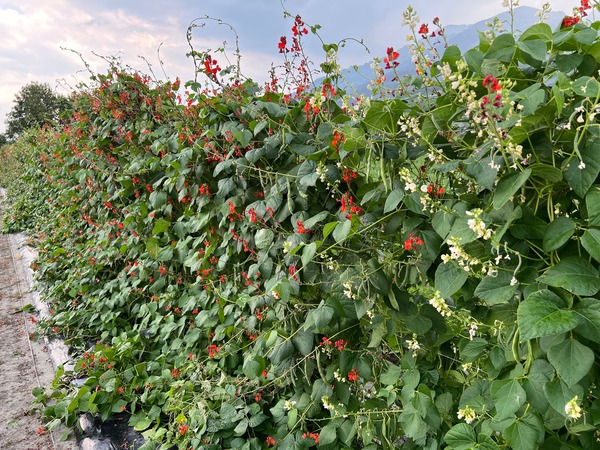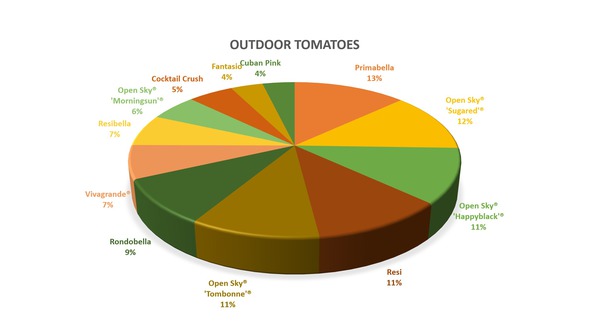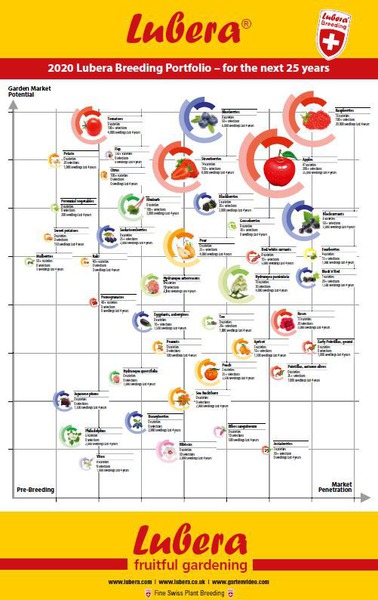 In economic boom times (remember, it was just over a year ago...), self-sufficiency is a luxury product, so to speak: we afford to produce and prepare part of our food ourselves, thus restoring the immediacy and self-control we have lost in the economy based on the division of labour. - In times of crisis, self-sufficiency partly changes its face: long before it really saves money (or rather liquidity), it gives a feeling of security. We can feed ourselves to some extent, we make provisions, the preserving jars are cleared of dust and jams are produced in abundance. And here too, in crisis-driven self-sufficiency, the feeling of wellness, the feeling of doing something for health and fitness, is then added.
In economic boom times (remember, it was just over a year ago...), self-sufficiency is a luxury product, so to speak: we afford to produce and prepare part of our food ourselves, thus restoring the immediacy and self-control we have lost in the economy based on the division of labour. - In times of crisis, self-sufficiency partly changes its face: long before it really saves money (or rather liquidity), it gives a feeling of security. We can feed ourselves to some extent, we make provisions, the preserving jars are cleared of dust and jams are produced in abundance. And here too, in crisis-driven self-sufficiency, the feeling of wellness, the feeling of doing something for health and fitness, is then added.
How big is the self-sufficiency trend and what exactly is driving it?
We have analysed the self-sufficiency trend in more detail in an article at Lubera.com.
Die Selbstversorgung, die wir meinen - eine kleine Begriffskorrektur (Only available in German)
At first glance, it appears that the demand for self-sufficiency topics as measured by Google is not that great. Self-sufficiency from one's own garden is searched for much less frequently than, for example, raspberries, planting raspberries or cutting raspberries... But if we then analyse the video views on YouTube, it becomes clear that the self-sufficiency trend continues unabated here and easily breaks through pure gardening topics. A new video on the self-catering channel, for example, reaches 30,000 to 40,000 views and dozens of comments after only a few days; Youtube channels such as Selfsupporter "Rigotti" or "the Self-supporter Channel" have 60 to 80 million views... So do consumers like to watch what they don't do themselves, self-supporter porn, so to speak?
This interpretation also falls short: the (unfulfilled) desire is the father of the trend. Consumers want to grow more edible plants, but they don't know how to do it. This trend is also reflected, for example, in the growing demand for gardening information in the Lubera.com gardening book/magazine; of the over 2 million monthly visitors to Lubera.com, over half do not end up in the shop but on the information pages. It is the task of all of us to satisfy this thirst for knowledge, the thirst for comprehensible information, and to provide guidance for self-sufficiency, for growing edibles ourselves....
Self-sufficiency de luxe and from perceived insecurity: two sides of the same coin
And another thing: in addition to the cyclical increase in demand for 'grow your own', the luxury demand for self-sufficiency, for control over one's own food (health, taste, enjoyment) has not simply disappeared. Incidentally, this demand is also aimed at security. In addition: by definition, garden owners tend to be rather well off financially; their budgets may be reallocated somewhat, but plant purchases and especially the purchase of edibles are hardly affected by this (because they are not subjectively perceived as a luxury). We will see this at the latest when the after-hours demand for holidays and travel is satisfied...
Happy who produces edible plants
And perhaps we should also fundamentally recall that those who produce and offer edible plants can consider themselves lucky. The trend towards edibles remains unbroken and is even gaining momentum - because they are always in demand. But this also means that the advantages of edibles need to be brought to the attention of gardeners. It is certainly also right to distinguish edibles from other plant groups, purely ornamental perennials and shrubs. Fruit trees, wild shrubs, even scarlet runner beans can also form a wonderful hedge with excellent privacy protection. And why shouldn't balcony boxes and tubs grow mainly edible plants? The added benefit is easily and almost self-explanatory... A mixed perennial bed, without large islands of berries, fruit and perennial vegetables, should be a thing of the past. Edibles are not the little stepsisters of the big beautiful plant world, but, at least for us humans, their core and the basis, the framework of a modern and - I take the liberty of using the unword - sustainable garden.

Picture: As beautiful as it is usable, the scarlett runner bean (Phaseolus coccineus), also called fire bean. In summer it can also be used as a privacy screen.
What exactly can the young plant producer do for the self-sufficiency trend?
Here we have to address a fundamental problem that young plant producers like Lubera Edibles cannot really escape. We don't sell our plants directly to consumers, but to producers, so not B(usiness)toC(onsumer), but BtoB. It is even more complicated, because the majority of our customers do not sell directly to consumers either, but again to resellers, to garden centres, DIY stores, garden centre chains, food retailers, etc. The model could also be described abstractly as BtoBtoBtoC. The consumer is therefore infinitely far away from us, the breeder and young plant producer.
We are more than aware of this distance; that is why we have built in several mechanisms for Lubera Edibles to help us and our customers to keep shortening this distance and to react quickly and appropriately to trends:
Lubera.com as a data source: our sister company Lubera AG operates one of the largest plant and gardening advice platforms in the German-speaking world with over 2 million visitors per month, with a strong upward trend. This platform offers us a wealth of data on the composition of assortments, on the natural relative demand for plant varieties (e.g. male kiwi vs. female kiwi vs. self-fertile kiwi). We have already published several studies on this in our gardening book. However, you are also welcome to approach us with specific questions to gain more certainty about the composition of assortments.

Picture: Evaluation of sales numbers for outdoor tomatoes after the planting season 2022
Lubera.com as a test track: Of course we test our novelties from breeding before we introduce them to the market. But the best test is always the garden of our end customers. Most Lubera plants go through a kind of test track on Lubera.com before they are introduced en masse at Lubera Edibles. This helps us to recognise the potential of plants, but it also sometimes enables us to stop new plants at the last moment and withdraw them from circulation because problems not previously recognised have arisen during the hundred and thousandfold test at our end customers'...
The breadth and depth of the Lubera Edibles assortment as a basis for distinguishing and profiling our young plant customers: It is not uncommon for us internally at Lubera Edibles to discuss the breadth and depth of our assortments and gladly the production planning department would throw out many varieties. This is certainly necessary from time to time. But our assortment breadth and depth should also help our young plant customers to select distinguishable assortments themselves on this basis and then to refine and profile their production type, pot size, production quality and through plant preparation. We are also happy to offer the service here, on request, of developing and suggesting assortments and variety combinations based on your needs and ideas.

Picture: Overview of Lubera®'s main breeding programmes - this is where the largest output of new varieties is generated for Lubera Edibles.
Lubera® brand: The Lubera brand is becoming increasingly well known due to its reach, especially in the information sector, and above all this awareness does not primarily concern the professional market (i.e. BtoB customers) who obtain information in trade journals, but the end customers themselves, who mostly look around online before making a physical purchase. Of course, we also offer our young plant customers the use of our Lubera umbrella brand in their communication and on labels and advertising material, always of course in connection with the young plants purchased and cultivated by us. This is particularly suitable for producers who supply the market of garden centres and garden centre chains, as here the profile of the clientele best matches our online audience. Consequently, Lubera itself no longer sells finished plants to resellers, so it does not compete with our young plant customers or brand licensees.
